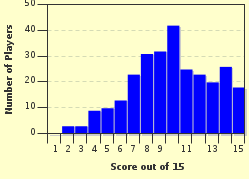Quiz Answer Key and Fun Facts
1. Food as sexual metaphor: "I will not dwell upon ragouts or roasts / Albeit all human history attests / That happiness for man - the hungry sinner! / Since Eve ate apples, much depends on dinner", wrote Lord Byron in his satirical poem about a legendary libertine whose story has been immortalised by many novelists, poets and playwrights. Who is this womaniser?
2. The refusal and eventual acceptance of food as a process of self-discovery is the central theme of "The Edible Woman". The first published novel of a successful Canadian poet, it focuses on a young woman who one day starts to reject food and "has the crazy feeling that she's being eaten". Who wrote it?
3. Haute Cuisine as blackmail: Sweet-natured but intellectually limited Bertie Wooster - the employer of valet Jeeves in P. G. Wodehouse's hilarious stories - is the frequent victim of his formidable aunts. Aunt Dahlia, for example, bends him to her will with an infallible method: she threatens to withdraw from him access to the supreme culinary delights provided by her French cook. What is the name of that heavenly chef?
4. French temptations: "You got very hungry when you didn't eat enough in Paris", remembered this American author in "A Moveable Feast", a collection of memoirs about his early days in Paris, when he lived there with his first wife, Hadley, and their son, Bumby. It was a time, he wrote, "when we were very poor and very happy". Which author am I alluding to?
5. Food as political vehicle: In his verse epic "Germany. A Winter's Tale", Heinrich Heine uses German cuisine as a satirical code to denounce the social and political situation of his motherland. At the beginning of a long list of dishes, Heine salutes one generally considered the most typical German food. What is it?
6. Food as reconciliation of spirit and flesh: In this Isak Dinesen novella, a French refugee prepares a magnificent meal for a small, puritan community, and shows the pious guests that enjoying the pleasures of life isn't necessarily sinful. What is the title of the story, which was also turned into an enchanting movie in 1987?
7. Starvation can serve as a metaphor for alienation, obsession and self-destruction - recurrent themes in most of this Austro-Czech writer's works. They all culminate in his striking story "A Hunger Artist", in which a man spends a great part of his life in a cage, giving "fasting performances". Who is this writer?
8. Food references abound in Shakespeare. An excess of self-indulgence is the most prominent trait of an exuberant, bragging, dishonest and obese knight who appears in three Shakespearean plays. To which comic character am I referring?
9. In his beautiful "Odas Elementales" (Elemental Odes), this Chilean poet raises to poetic spheres the most humble of foods: bread, onions, artichokes, tomatoes, lemons, potatoes and more. Who is this Nobel laureate, who lived several years in exile because of his political activism, and is especially famous for his "Canto General" and the collection of lyrics "Twenty Songs of Love and a Song of Despair"?
10. "Personally, I like a chocolate-coloured sky. Dark, dark chocolate. People say it suits me", states Death in "The Book Thief", one of the most innovative and acclaimed novels of the last years. The story - narrated by Death itself - revolves around a young girl during World War II. Who is the Australian author who produced this international best-seller?
11. Mrs. Ramsay's memorable dinner party - a key scene in "To the Lighthouse" by Virginia Woolf - is declared at the end "a triumph". The dish she serves at the occasion also rose to literary fame: a Provencal-style stew that requires three days of preparation. What is the name of this French speciality?
12. The pleasure of the senses emanates from every page of Isabel Allende's collection of erotic poems, legends, anecdotes, essays and recipes celebrating the "food of love and the love of food". Its suggestive title is the name of the most sensual of Greek goddesses. Who is she?
13. Food is not only an environmental factor, but the main literary device to characterise people and their struggles in "Le Ventre de Paris", Émile Zola's novel set in the Parisian market of Les Halles. What does the title translate to in English?
14. Family meals invariably end in failure in "Dinner at the Homesick Restaurant", a novel that follows the lives of a mother, deserted by her husband, and her three children. Which best-selling American author penned it?
15. Voracity as mortal sin: In Dante's "Inferno", the gluttons, deprived of any food or drink, are forced to lie in the mud under a continual cold rain that makes them howl like dogs, while their keeper - a mythological three-headed dog guarding the gate of Hades - rends, flays and quarters them with his claws. Who is this scary monster?
Source: Author
Arlesienne
This quiz was reviewed by FunTrivia editor
agony before going online.
Any errors found in FunTrivia content are routinely corrected through our feedback system.

